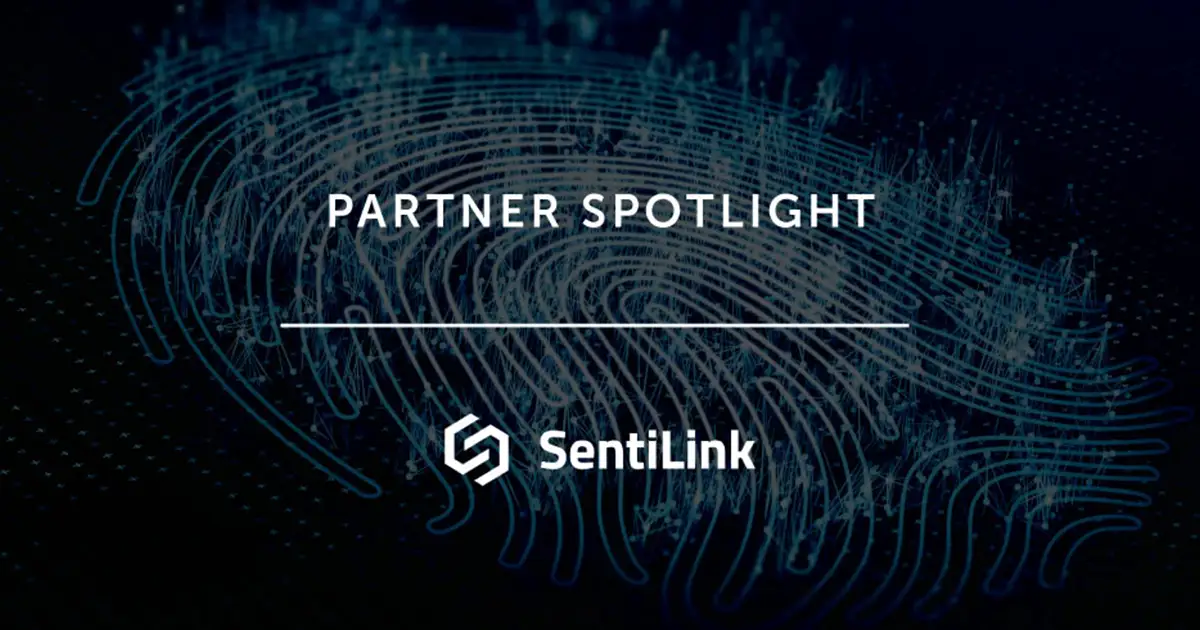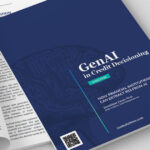In this Partner Spotlight, we’re focusing on SentiLink, a leading provider of synthetic ID fraud detection and prevention solutions. Max Blumenfeld, Co-founder at SentiLink, shares details with us.

How long have you been a partner with Zoot?
We are a new partner to Zoot in 2020.
Why did you choose to partner with Zoot?
Zoot and SentiLink began communicating early in our company’s lifecycle, so we knew that Zoot was already doing a great job of staying ahead of the latest trends in fraud and new emerging solutions such as ours. COVID-19 has only accelerated the trend to digital account opening in financial services, and we think our partnership with Zoot can provide tremendous value for joint clients working to manage fraud during this massive shift in consumer behavior.”
What specific issues does SentiLink address?
We are focused on eliminating the $6B+ annual problem of synthetic identity fraud.
Synthetic identity fraud is a type of falsified identity used to open bank accounts, apply for loans, get credit cards and related financial services accounts. Synthetic identities can also enable fraudsters to get cell phone service, rent an apartment and much more.
At SentiLink we tag an identity as synthetic when the name, date of birth and Social Security number don’t correspond to any real person.
How does SentiLink work?
SentiLink’s API provides 3 scores that enable clients to detect when a potential customer is trying to onboard using a synthetic identity. Not only do we provide scores, but we make raw data available to clients to incorporate into proprietary risk models. A dashboard is also part of the solution to support investigation into specific cases.
We also offer digital verification of name, date of birth and SSN combinations with the Social Security Administration with their new eCBSV service.
What makes your solution unique?
There are three things that set our offering apart. First, we go a step further than anyone else with a synthetic fraud solution. We not only score applications with a likelihood of synthetic, but we further classify each case into 1st party and 3rd party synthetic fraud.
Knowing whether a synthetic identity is 1st or 3rd party drives the potential treatment of applicants. If an applicant is flagged as a potentially 1st party synthetic identity, they are potentially using an SSN that doesn’t belong to them. Verifying the Social Security number is the best treatment for that case.
SSN verification can be done by requesting an SSN card from the consumer (which requires validating the document hasn’t been forged) or checking whether the number exists within the Social Security Administration’s database via eCBSV or form SSA-89.
Second, we provide very targeted solutions to address the problem of synthetic identity in that our scores have a low false positive rate relative to other identity solutions.
Finally, we provide unique manual tagging by our Risk Operations team, which brings consistency and visibility into emerging fraud vectors. This team reviews and labels live streams of applications with well-defined tags that are applied consistently across analyst. Our predictive models are constantly learning based on their feedback. And, they are able to catch nuances that technology can’t.
What problems does SentiLink solve?
SentiLink solves the problem of quickly identifying synthetic identities without introducing friction into the process. Detecting synthetic identities is hard and eludes most identity solutions.
Our solution is often placed at the “top of the funnel” which eliminates the need to send applications scored with a high likelihood of synthetic fraud through the typical credit process.
Our solution also mitigates the problem of compliance risk related to synthetic identities. Banks and lenders are, at a minimum, obligated to verify the identity of applicants they bring on board. And while KYC rules designate that only a “reasonable belief” is required to verify identity, the fact that synthetic fraud is the fastest growing financial crime in the U.S. likely means that there will be increased scrutiny around synthetic identity checks.
Synthetic identities often go undetected for years and yet many of these identities steal money that is used to fund terrorism and other illicit activities. There are potentially catastrophic implications to not addressing the problem of synthetic identities.
Who is a good fit for your solution?
Our primary focus is banks, lenders, and other financial institutions such as credit unions. For the financial services industry, we not only score deposit customers, but all types of lending applicants including credit card, auto, medical lending and small business.
We have also expanded to other verticals, including telco’s and insurance companies.
What is the main benefit that joint clients will see?
There are three main benefits to working with SentiLink – loss reduction, speed of decision making and operations efficiency.
Joint clients will see a reduction in losses by not onboarding synthetic identities who don’t perform or are priced incorrectly. They can also quickly make this determination, which will speed up decisioning. And they can reduce their collections activities by not trying to collect from identities that don’t exist.
What trends do you see, that joint clients should be thinking about?
There are common tactics used by fraudsters with synthetic identities. They often engage in credit washing to get certain tradelines deleted from their credit report. They use authorized user tradelines to boost the credit score of their manipulated and fake identities. And, they work with non-reputable credit repair agencies to quickly season their identities and accelerate their ability to get access to higher credit lines.
Anything else you’d like to share?
Getting started with SentiLink is easy and doesn’t cost anything. We like to start by doing a free retro study to assess how much of a problem they have with synthetic identities.
We usually find 40-80 basis points of synthetic fraud in a typical loan portfolio. We don’t charge potential clients to find out if our solution can help them. And, it only requires sharing 4 pieces of information on prior applications or approved accounts.
Conclusion
A big thank you to Max Blumenfeld, co-Founder from SentiLink for this look at their approach to detecting and preventing synthetic identity fraud.




